How to: plant a perfect hanging basket
Hanging baskets are great fun and give you loads of colour and pleasure all summer. They are great for bringing flowers to walls, porches, windows and doorways. They have a reputation for being high maintenance, but I’ll show you some simple tricks to get luscious blooms for months on end!
Choose your basket
There are two main types of basket: containers, which are any solid sided tub, and the traditional wired basket.
The secret is to get the biggest possible hanging basket or container. The bigger it is, the more soil it will hold, meaning more moisture and more nutrients. Moisture is key during the summertime to make sure your plants don’t dry out.
Preparation – containers
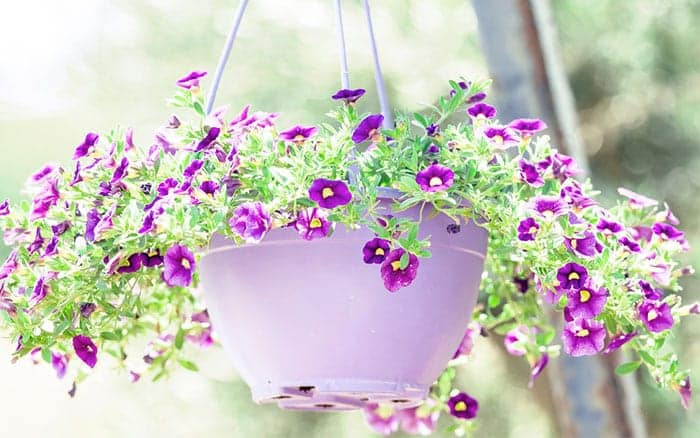
The most important thing is to check for drainage. If water can’t drain away, the soil will become waterlogged and your plants will die.
Some containers, such as wicker ones, come pre-lined with plastic. Make sure you punch a few holes in the bottom of the lining so the water can drain out.
Plastic tubs usually have drainage holes drilled in the bottom, but it’s worth putting crocs in there too. This means a layer of gravel or broken pottery to stop compost blocking up the drainage holes.
Preparation – wired
This type of hanging basket is usually wire mesh with a moss lining. Rounded baskets tend to roll about when you’re trying to line and plant them, so balance it in the top of a bucket or plant pot to keep it still.
Line the bottom of the basket with the moss, bringing it about halfway up the sides. If you leave a gap, you can push some plants and flowers through the metal above the moss, making your basket look fuller.
Now line that with newspaper. This stops compost falling through any gaps in the moss, plus it rots down nicely, adding extra nutrients to the soil.
Filling
It’s best to buy hanging container compost to fill your baskets. It’s more expensive, but you’ll save money in the long run because your plants will last longer.
First, it contains a wetting agent, which means you can water it when it’s very dry without doing any damage. Secondly, it contains extra nutrients to feed your plants as they grow
Add compost to your basket until it’s about three-quarters full. Don’t over-fill it – leave space for your plants’ root balls.
When the basket is finished, there should be a 2cm gap between the top of the basket and the compost level. If it is too full, water will run off the surface and down the sides rather than soaking in when you water your baskets.
Hydration
If you want to be clever, help your plants even more by adding failsafe moisture. You can use hydration crystals to the compost, which are little jelly crystals that store moisture and release it when the soil gets dry.
Or you can put a water slice in the bottom of the basket before your compost goes in. This is like a dry pepperoni slice, but it’s actually a polymer. When it’s soaked with water, it turns to a saucer-sized gel that stores the excess moisture every time you water the basket.
Planting
The best thing to do is to choose three types of plants: one upright central plant, trailing plants that go round the outside and fillers that really give the basket volume.
Start with the big plant. Dig a hole in the centre, put your plant in it and firm well in. For the other plants, think of the basket as a clock face. Plant your trailers around the outside at 12, 4 and 8 o’clock, or 12, 3, 6 and 9 o’clock. Then add your filler plants in between and top-up with compost. Do not over pack the basket – leave some space for the plants to develop.
Fuchsias or geraniums are classic centre plants – tall and brightly coloured. A typical trailer is ivy, which adds great evergreen colour. Or try lobelia, helichrysum or trailing geraniums for colour. Good fillers include Busy Lizzies or Begonia Semperflorens, which add extra volume.
If that’s too many plants, choose one bulky trailing plant such as Petunia Surfinia, which will run down the sides and underneath – it looks fantastic. Simply bed the plants together as one solid group and they’ll grow outwards.
Maintenance
Once your hanging basket is planted, water it well. The compost may sink down and leave a gap – if so, add a bit more compost. Hang them in full sunlight and water when the soil starts to dry out. Water your plants with liquid fertiliser throughout their growing season, and remember to deadhead flowers to encourage more blooms.
And that’s it! Get great hanging baskets with minimal effort and watering.
4 Comments
Leave a Comment
You must be logged in to post a comment.


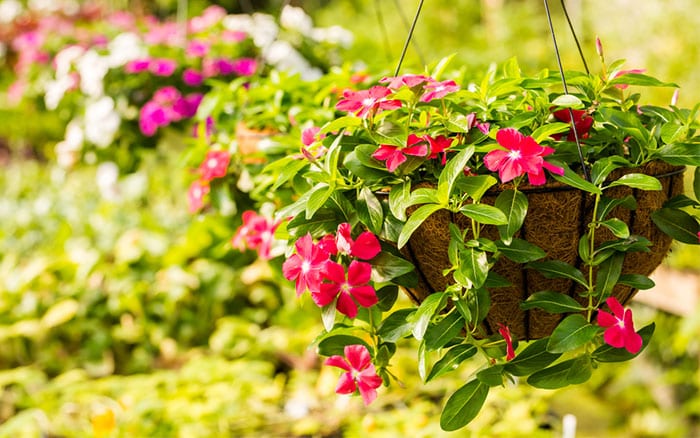
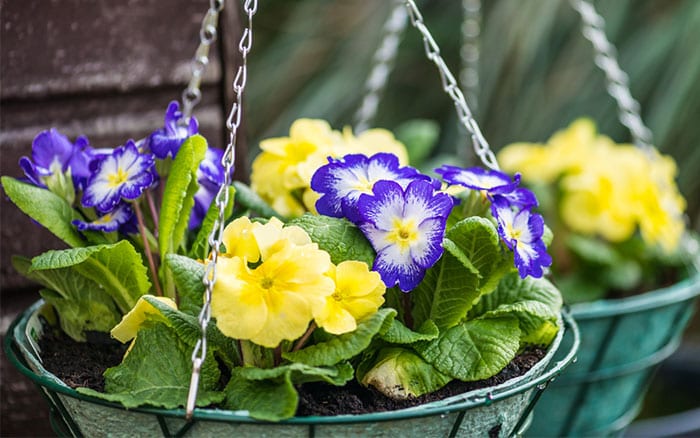
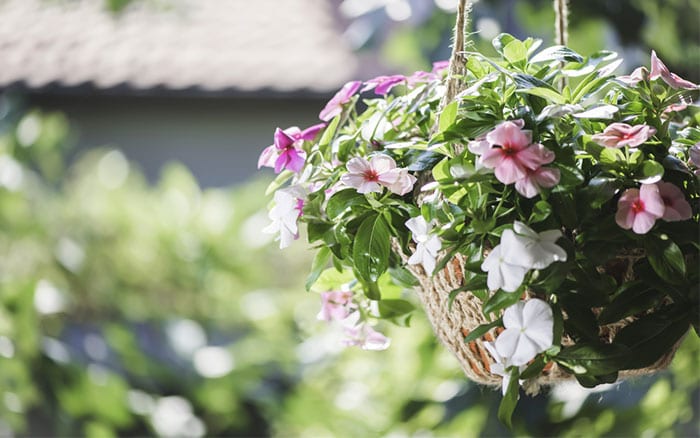
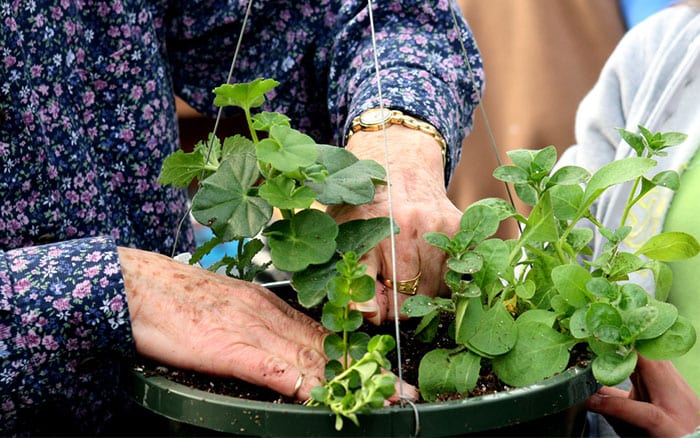
Hi
I’ve been using and planting up hanging baskets since the early 1980’s. The advice above is perfect but omits one factor which the uninitiated may initially ignore. I refer to the power of the wind which can devastate an exposed basket undoing all your hard work. It’s important to keep track of the weather forecast so in really high winds they can be taken down and put temporarily in a sheltered position. A large flower pot will suffice to keep them raised off the ground. Hope this is useful to anyone interested.
Mutimer
You’re absolutely right Mutimer, great advice.
Instead of water slice if it is not available you can also use a toddlers nappy or two.it does the same job tried and tested!
Hi Dimitrios, sounds a good idea, do you cut up pieces of nappy and if so how big are the pieces.